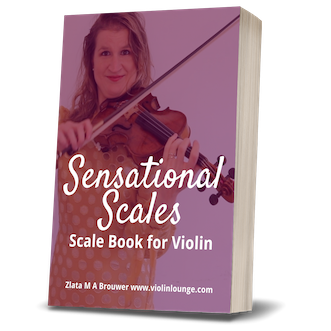3 Violin Practice Tips to Save Time and get Faster Progress | Violin Lounge TV #280
“The technique of practicing is more important than the practicing of technique”
So many people focus on how many hours a violinist should practice…
What matters most is HOW you practice on the violin!
Practicing for many hours can be useless or even counterproductive when you’re doing it wrong.
In this video I share 3 tips to get faster progress in practicing on the violin and save time:
1) Align scales, etudes and pieces
A lot of people play random scales by routine or they practice etudes in the sequence of the etude book. In this way you can get confused between different keys and you can’t apply what you learn in your etude.
The scales and etudes you practice should support the pieces you are currently working on.
In the scales you get familiar with the key of the piece on the violin. Also you can practice bowing techniques that you need in the piece. Etudes are very useful when you pick an etude in which you practice a technique you need in the piece you play. Identify what’s difficult for you in the repertoire you play and search for an etude that focusses on this technique. Each etude serves a certain ‘purpose’.
In this way the different parts of your practice session benefit each other. Also you’ll feel that your scale and etude practice is more useful and you’ll be more motivated to study them. This is what I call a ‘practice package’.
2) Don’t play through the piece
Certainly beginner violinists play through a piece three times and call this practicing. Actually practicing is picking out the difficult spots, analyze what goes wrong and practice what you need to learn to be able to play it. This is what I call ‘zoom in, zoom out’ or the ‘whole parts whole’ method. First play through to identify what you need to practice on, practice those difficult spots and zoom out again to see if the bits fit in. During a practice session you repeat this process several times. In this way you really tackle your mistakes.
3) Analyze your mistakes
Don’t beat yourself up and don’t get frustrated. Use your mistakes as a source of information. This also means you shouldn’t ignore your mistakes and hope they’ll magically disappear as you play through the piece another time. When you notice a mistake, stop. You are not on stage: you are practicing. Playing in your practice room should be different from playing on stage. When you make a mistake on stage, use your best poker face and continue as if nothing happens. When you do that while practicing, you’ll only repeat your mistakes and automate them.
FREE Violin Scale Book
Sensational Scales is a 85 page violin scale book that goes from simple beginner scales with finger charts all the way to all three octave scales and arpeggios

Hi! I'm Zlata
Classical violinist helping you overcome technical struggles and play with feeling by improving your bow technique.
Ask yourself in a patient and loving way: What went wrong?
Was the fingering a bit unhandy? Should you change the bowing? Or should you practice this bowing technique in an etude? Are you feeling a bit lost in the key and should you practice some scales? Can you practice some rhythmical variations to make that fast run easier?
You should be interested in finding a solution. Be curious and enjoy the process of finding out how you can improve!
Click here to watch more free violin lessons about practicing!
Now I’d like to hear from you!
What is the biggest insight you got from this video? Is there a golden practice tip that benefits you and that you would like to share? Leave a comment below!


I am 68 years old an I want to tell you you have helped me so much. I have been playing a little over a year. My motto is better late than never
Certainly, Sandra, enjoy!
Hi Ms Zlaga Brouwer.
i am new to playing the violin i am 52 years old i am teaching myself, I could use any help you could suggest. Thank you and have a great day
Thanks for sharing and enjoy my lessons, Nancy!
Hi Zlata,
Help!!
A friend of mine who is an extremely gifted tin-whistler has asked me to help him with his notations regarding his rhythmic conceptions, saying, “I have found that most sheet collections hyar [here] don’t reflect the “Irish rhythm”, properly so as it would be incongruous to other genre often played locally at social gatherings. I have gone thru the 49 tunes in the collection and interpreted them in the style I learned.
Further, the tempo is the awakening call to the spirits, what it takes to make my toe tap.”
The rhythms are syncopated.
Many of these tunes are new to me.
Do I play the tune through very slowly to get the odd syncopation correct right off?
Or do I play the tune through to get the general melody in my head then go try to add the syncopation?
Hi Dot, Irish music is to be played as you know the tunes by ear. The tradition is aural and not by sheet music, so yes, you can play the rhythm differently than in says in the sheet music. It’s not Mozart after all :). Happy practicing!
“Use your mistakes as a source of information”, I wrote this sentence immediately on the first page of my home-work book! And to analyze my struggles in a patient and loving way, ‘zoom in – zoom out’. Like climbing the mountain while you enjoy the views. If you suddenly realise you reached your goal you feel a winner for the rest of the day 🙂 If not: you are defenitely doing better than yesterday…
Great insight!